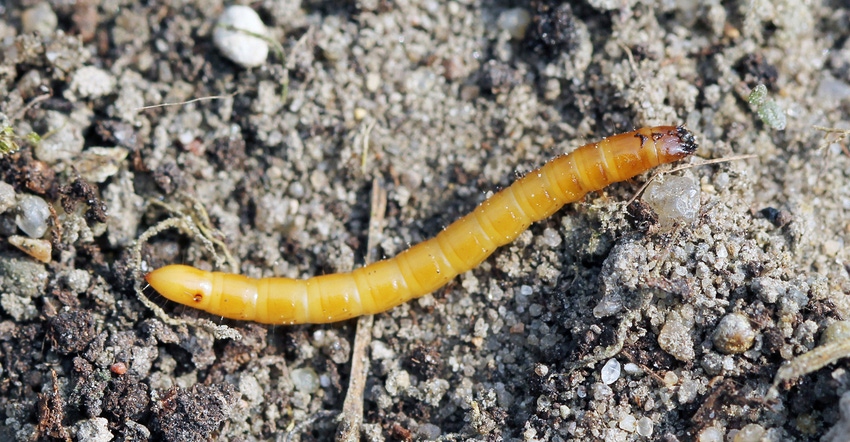
Producers might think the empty patch in their wheat field is from their planter skipping, but it could be a sign of wireworms feeding on the crop.
Tracy Hillenbrand, a technical service representative for BASF, says these empty patches can be a sign that wireworms are feeding on your wheat. “If you go and dig around some of those empty patches, you’ll actually see some wireworms in the area or feeding marks on the plant,” she says.
Wireworms feed off the roots of various crops, and this feeding can lead to substantial yield losses.
“Wireworms are attracted to germinating plants,” Hillenbrand says. “When the plants start germinating, the wireworms can sense the pheromones off these plants and feed on the seed and emerging plants and root systems.”
Due to their underground presence, producers should be vigilant to the aboveground signs of wireworms.
“Wireworms can live in the soil for three to five years before they molt into a click beetle, which then has the ability to fly into other areas of the field to lay those eggs and then continue that cycle,” she explains.
This multiyear larvae stage is where producers will see root damage and plant mortality as a result of the wireworm feeding.
“Trapping systems can be a great way to see if your ground has a problem. Bait traps will draw in the wireworms, and then you can tell how bad of a population you may have in your field,” she explains.
For growers getting ready to plant their winter wheat crops, seed treatments are one of the most effective ways to control these wireworms.
Kill worms for best control
Hillenbrand says the best way to control populations is with a seed treatment that kills worms after feeding on treated plants. “There are a lot of products on the market that will cause a drunkenness effect in the worms, but they won’t kill them, which can allow for secondary feeding,” she says.
Teraxxa F4 is a seed treatment for use in all cereal grain crops and will kill the wireworm at first feeding.
“It’s the only Group 30 available on the market, and the active ingredient in Broflanilide, which will lead to [wireworm] mortality,” she says.
Teraxxa F4 works by binding directly to a point on the wireworm’s central nervous system, causing insect mortality.
“Even one click beetle coming into your field can lay an average of 50 eggs, so one beetle coming back can really increase wireworm populations,” Hillenbrand says.
Even with effective seed treatment, Hillenbrand says producers need to be watchful to reduce populations due to the life cycle of the wireworms. “It will offer mortality of anything that comes in contact, but it’s important for growers to know that those wireworms will still be in the soil, and it’s going to take multiple uses to continually reduce that population,” she says.
With many producers making plans for their upcoming winter wheat crops, now is the best time to get in contact your local BASF field rep to learn more about this seed treatment.
About the Author(s)
You May Also Like






